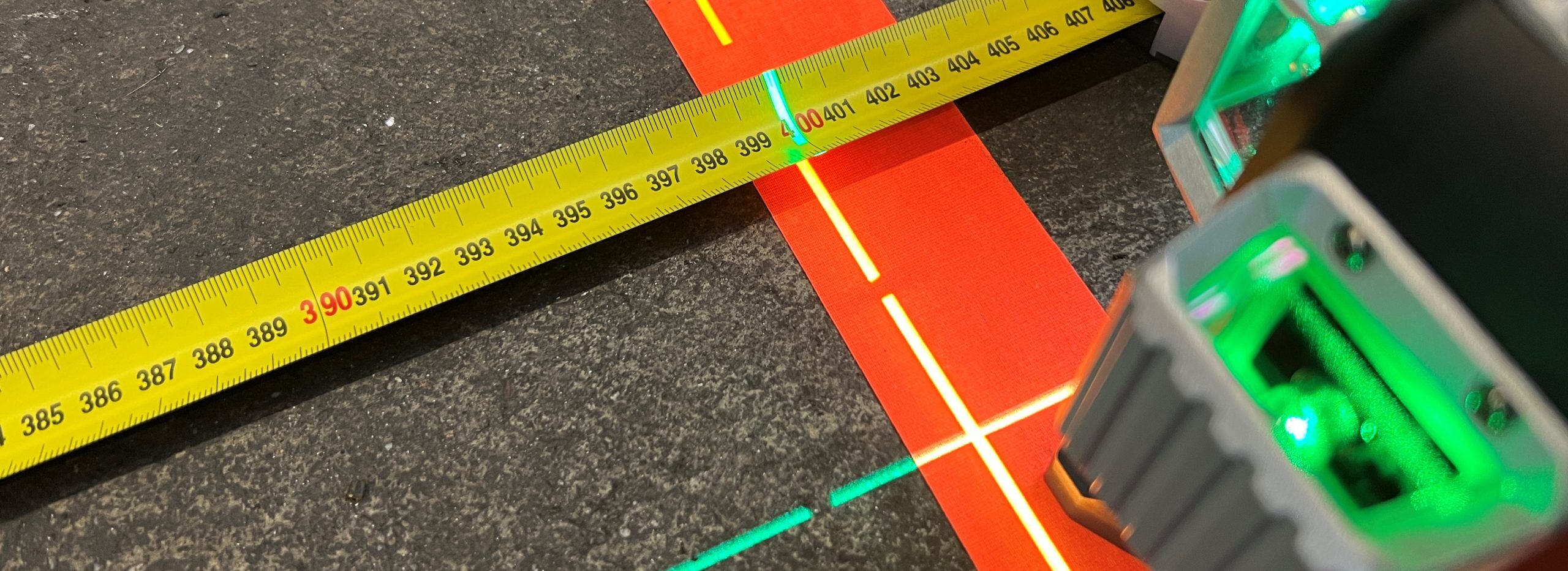ADAS calibration is necessary after many types of automotive repairs. ADAS stands for Advanced Driver Assistance Systems. Currently (2022) virtually all new cars have some type of ADAS system, but some 10-year-old cars also have early ADAS systems. If you’ve found the article, you may have been told that you’ll need a camera calibration after a windshield replacement. Or maybe somebody said you needed a radar calibration after cooling system or air conditioning work. Like most people, you might wonder if it’s really necessary. This article covers the information consumers need to make informed decisions about vehicle repairs that affect ADAS systems. Even if you don’t live near Berkeley, you’ll likely find this information useful when talking with glass shops or body shops about repairs.
Table of contents
- Is calibration really needed after a windshield replacement?
- Calibration after windshield replacement
- Can you use an aftermarket windshield for a car with ADAS?
- Is it possible to do a DIY ADAS calibration?
- What systems are ADAS cameras used for?
- What is an ADAS camera calibration?
- When to calibrate ADAS radar
- Ultrasonic sensor calibration
- ADAS and its relation to wheel alignment
- How important is a level floor for ADAS calibration?
- How to compensate for floor slope
- How do aftermarket modification affect ADAS?
- What happens if ADAS is not calibrated or out of calibration?
- Are aftermarket ADAS calibration systems OK?
- What makes does Art’s Automotive calibrate?
- Should I let my glass shop do my ADAS calibration or should I go to a dealership?
- Can a regular mechanic shop perform ADAS calibration?
- How much does ADAS calibration cost?
- How long does an ADAS calibration take?
- If you need ADAS calibration and you’re in Berkeley, give us a call
Is calibration really needed after a windshield replacement?
Do you really need to calibrate the system after a windshield replacement? What if you’re sure the camera wasn’t bumped? The real answer is that I don’t know. I’m not an engineer and I wasn’t involved with the design or testing of the system. So, in absence of knowledge to the contrary, I’d strongly recommend following the OE’s recommendation. You may know that eyeglasses distort our view of the world, but our brain quickly compensates, and we can no longer see the distortion. The calibration is resetting the system’s brain to work with its new glass.
Update in 2023: We had a customer who had his windshield replaced on a Honda without a calibration. It didn’t work out well. The car couldn’t find lane markings and had issues with cruise control and collision warning.
Calibration after windshield replacement
We only repair Toyota, Subaru, Honda, and Mazda, so that’s what I’ll cover. Other makes may have very different requirements, and even among the makes we repair, things change. Statement that are true now may be false for future models. If you have questions, just call us and we’ll look the information up for your specific car and let you know.
Subaru camera calibration
Subaru was the first brand to add stereo forward facing cameras behind the windshield near the rearview mirror which they branded “EyeSight“. The two cameras provide depth perception which can be used to gauge distance and relative position, similar to human eyes. The system arrived in the US almost 10 years ago now so there are a lot of Subaru vehicles on the road sporting this technology.
Honda camera calibration
There are a fair number of Honda vehicles with forward-facing ADAS cameras. Unlike the Subaru, only a single camera is used, but the calibration procedure is very similar. Currently we’re seeing mostly Honda Odyssey, Accord, and Civic, but many other models have cameras that require calibration after windshield or camera replacement.
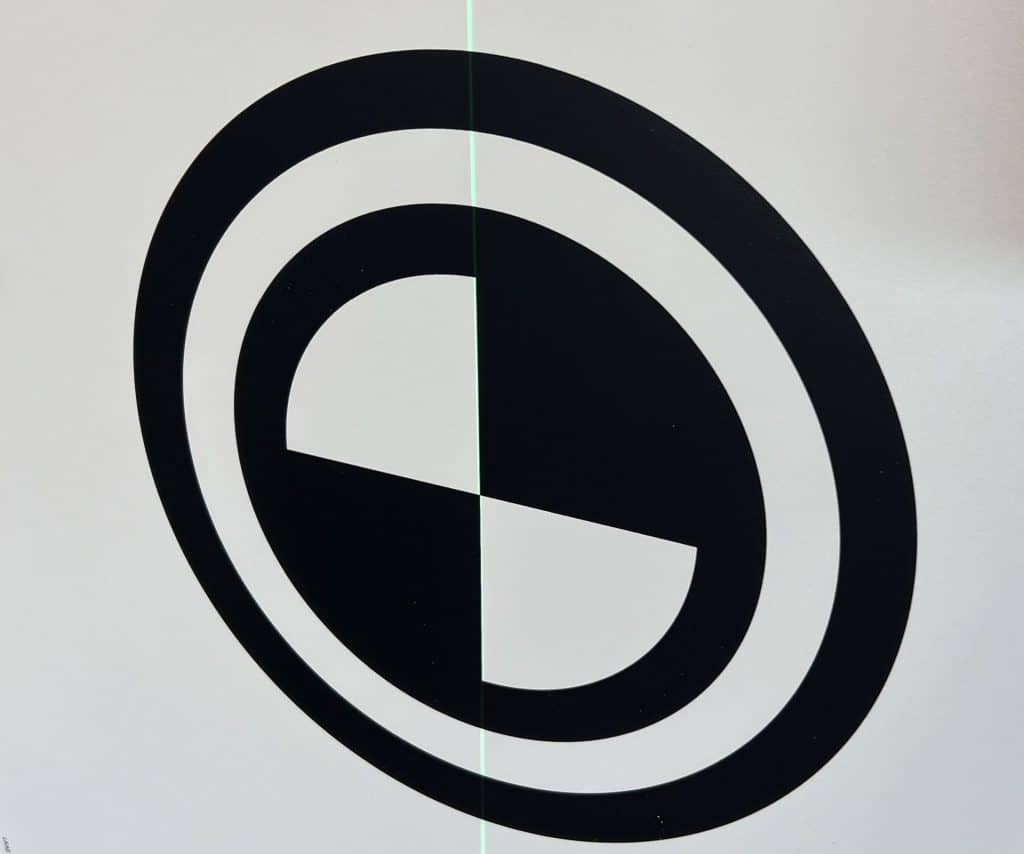
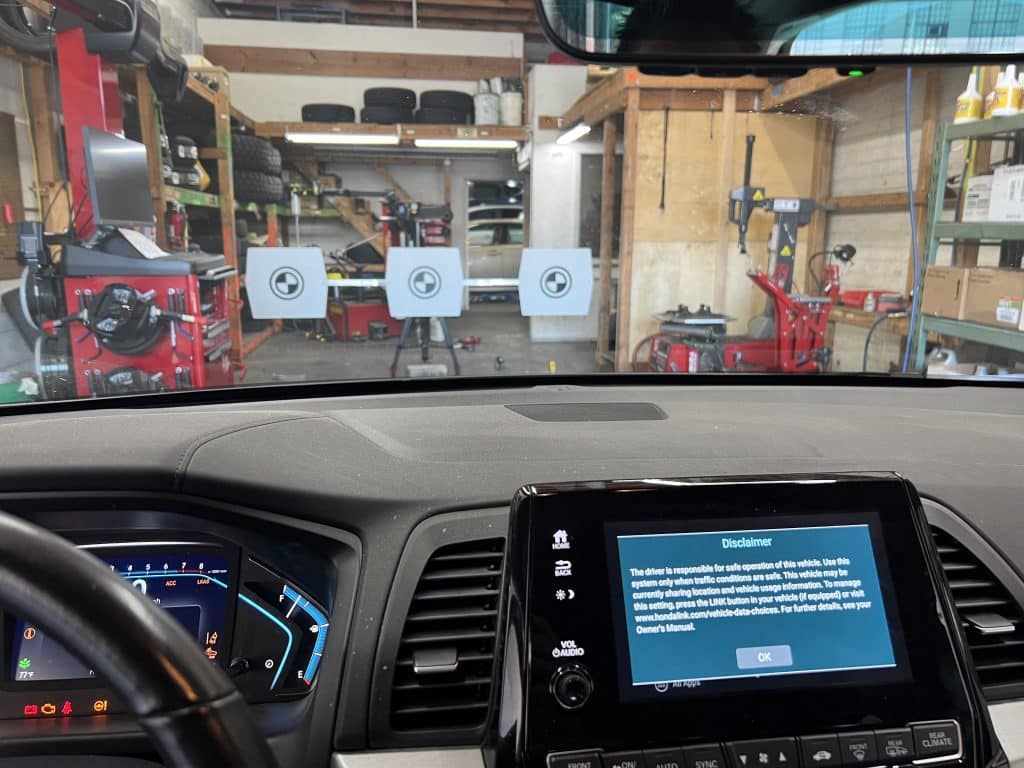
Toyota camera calibration
Toyota is always a leader when it comes to making sure that people can repair their cars. Subscribing to their service information and scan tool is the cheapest package for any make we repair. And many of the targets used for aiming the front camera can be printed with any standard printer.
Can you use an aftermarket windshield for a car with ADAS?
The cameras look through the windshield, so the glass is important. Variations in glass thickness and impurities can distort the image and block light. The cameras don’t like this.
We don’t replace windshields here, as a result we haven’t seen issues firsthand yet. However, we’ve heard many stories from reliable sources. It’s a real problem.
Can you use an aftermarket windshield on Subaru with an ADAS camera / Eyesight?
The short answer is no. If you have a Subaru, buy a Subaru windshield. Why? Because Subaru says so (sort of) and it’s a safety system. Subaru issued a position statement in 2017 saying:
“If windshield glass other than the glass specially designed for EyeSight is used, the distortion of the glass may prevent the correct measurement of an object, possibly resulting in improper or incorrect EyeSight operation, or the visibility of the camera may be locked.”
It’s kind of a soft statement. However, several service manuals say it a lot more firmly:
” Always use the Subaru genuine windshield glass specially designed for EyeSight. (If the windshield glass other than the glass specially designed for EyeSight is used, the visibility of the camera is blocked or the distortion of the glass prevents the correct measurement of the object, resulting in the EyeSight abnormal operation.”
If your insurance company says no, show them Subaru service manual. They’d be crazy to insist on a non-OE-approved repair on a safety system.
Can you use an aftermarket windshield on a Honda with an ADAS camera?
Maybe, but I wouldn’t recommend it. I have seen service information for some models that doesn’t specifically prohibit aftermarket glass. Honda did issue a position statement in 2018 stating:
” Installing anything other than an original equipment replacement windshield may cause these systems to work abnormally. Specifically, the camera will not be able to aim properly.”
This is a lot softer than saying, “always use Honda glass”.
I have seen an aftermarket windshield installed on a Honda Odyssey. The glass quality was pretty awful, and the road looked warped towards the bottom of the glass, creating a weird rolling effect while driving.
The customer already had the windshield installed and I couldn’t find any prohibition of aftermarket glass in the service information, so I ran the calibration procedure. Both the static and dynamic calibration completed without an issue. I wouldn’t recommend using aftermarket glass on a car with an ADAS camera, but it may work.
One very important note is that if the system cannot be calibrated due to an issue with the windshield, you’ll still need to pay full price for the calibration. A failed calibration takes a lot longer than a successful calibration because we’ll need to recheck absolutely everything to make sure the issue isn’t with our setup.
Can you use an aftermarket windshield on a Toyota with an ADAS (forward recognition) camera?
No, at least on the models I checked the service manual for. Toyota prefaces the instructions for windshield replacement with the following statement:
“When replacing the windshield glass of a vehicle equipped with a forward recognition camera, make sure to use a Toyota genuine part.”
Is it possible to do a DIY ADAS calibration?
Nope. Not at all. You may be an accomplished DIYer and you may be a whole lot smarter than me. (In fact, it’s likely.) However, you’ll need a lot of equipment. A $50,000 alignment rack. A factory scan tool. The correct targets for your car. And then a lot of practice.
You’ll also need enough room and a plan to deal with floor slope, lighting issues, reflective surfaces, and a myriad of other problems you’ll learn about as you gain experience.
It’s just not worth it. Hire someone to do the work. However, this will almost certainly change in the future as dynamic-only calibration becomes the norm. Until then, hire a pro.
What systems are ADAS cameras used for?
ADAS cameras are used for a LOT of systems, and I’ll likely miss a bunch, but here are a few.
- Lane departure warning
- Lane keeping assist
- Adaptive cruise control (often in conjunction with a radar sensor)
- Adaptive headlight control (turns down high beams to avoid blinding oncoming traffic)
- Pre-collision warning
- Automatic emergency braking
- Emergency collision avoidance steering
What is an ADAS camera calibration?
Calibration is both simple and complex. An explanation that makes it sound simple is: “Put a target in front of the car at a specified location, then connect the factory scan tool to the car and run the calibration routine”.
However, in reality the devil is in the details. And oh boy, there are a lot of details. Chief among them is accurately placing the target. The target should be within 4mm of the centerline as well as the distance and height specified. The Americans among you may wonder how big is 4mm. Around the width of these square brackets on your screen — [ ]. It’s not a whole lot of wiggle room.
While the poster on the whiteboard certainly looks low-tech, this is actually the Subaru-approved tool. They even have instructions to turn the whiteboard around, so the pen tray doesn’t interfere with the plumb bob used for centering.
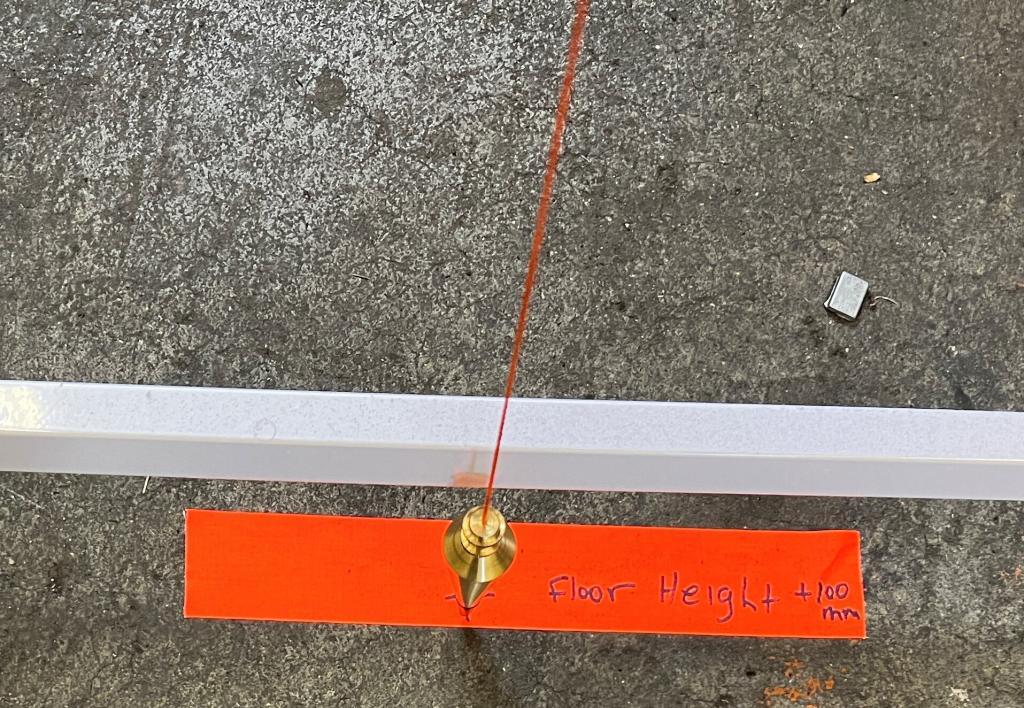
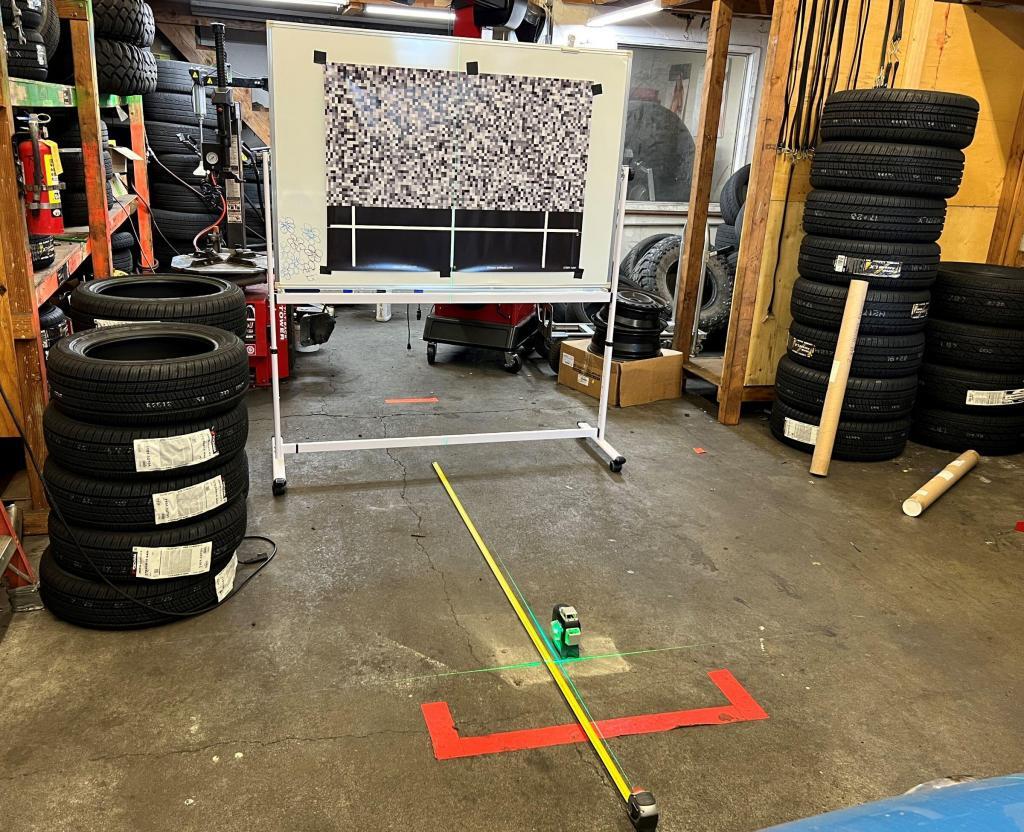
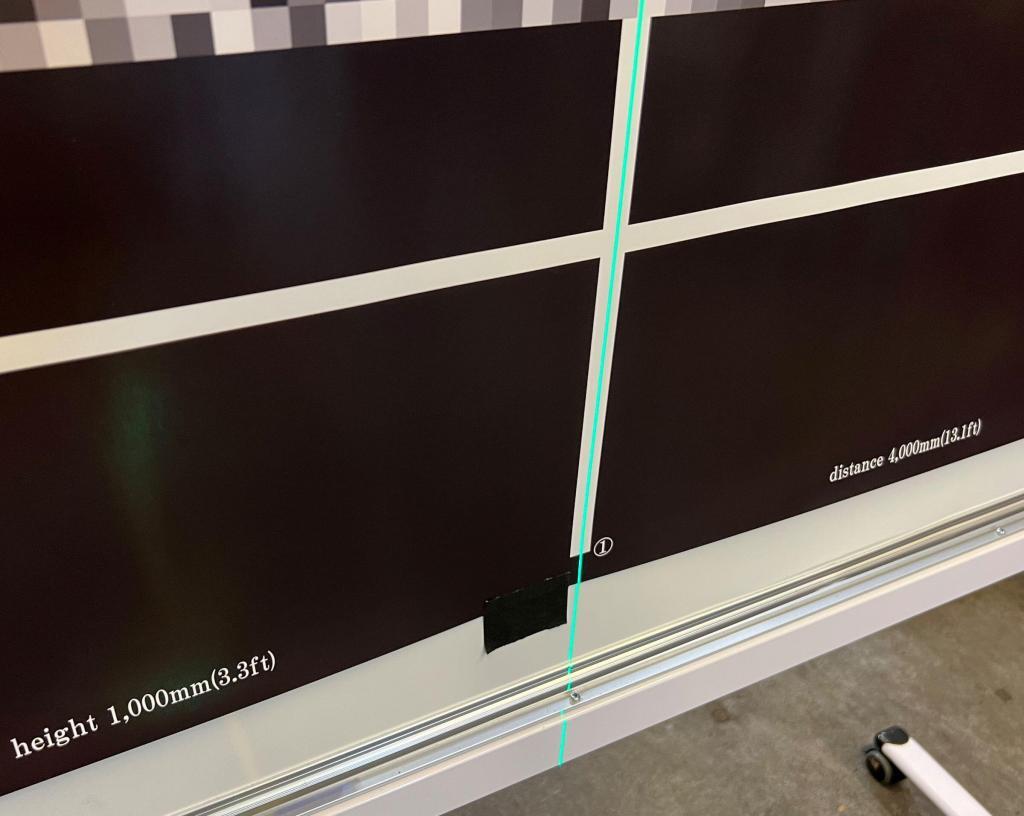
Subaru has procedures for setting the “random” target using nothing but tape measures, string, and a plumb bob. This will work, but it takes a lot of time. 3-axis laser levels make this ADAS calibration a whole lot quicker to set up.
ADAS RADAR CALIBRATION
Most new cars have a radar sensor behind the front bumper, often under the emblem. The car uses this sensor for pre-collision warning, emergency braking, and radar cruise control. Unfortunately, there’s no standardized naming conventions for these systems. Here are a few examples, but as features are added, system names change.
Honda: Collision warning, Collision Braking, Adaptive Cruise Control
Subaru: Pre-collision warning, Pre-collision braking, Adaptive Cruise Control
Toyota: Pre-collision system, Dynamic Cruise Control
When to calibrate ADAS radar
Whenever the bumper is removed, the sensor must be calibrated. The bumper is removed during many types of repairs, not just for body repair. The bumper often blocks access to the headlights, radiator, and condenser.
There are also two radar sensors in the rear of the car, located on the rear quarter panel under the rear bumper cover. These sensors are used for cross-traffic warning and blind spot monitoring.
Typically (but always subject to verification before assuming) these sensors only require calibration if they are replaced, or the car is hit. Usually, it’s OK to remove and install the rear bumper cover without performing a calibration. However, at our shop the policy is to read the service manual on all cars 2010 and up, even when doing simple repairs that we’ve done hundreds of times before.
Radar calibration is similar to camera calibration. A target is placed at a set point in front of the car and then we use a scanner to run the calibration routine. Instead of a target that looks like a crazy QR code we use a radar reflector. A radar reflector is a trihedral (a three-sided hollow pyramid).
Ultrasonic sensor calibration
Ultrasonic sensors are most commonly located in the rear bumper cover and sometimes in the front bumper as well. You’ve likely seen them. They’re small round sensors, usually about 1″ (25mm) in diameter. Theses sensors are used for parking assistance (that beeping when you hear when you get close to something). Subaru also uses them for automatic reverse braking, but since ultrasonic sensors have a very short range, the system won’t work at speeds over a few MPH.
Ultrasonic sensors often require calibration any time the rear bumper cover is removed or the car is bumped.
ADAS and its relation to wheel alignment
Cameras and radar need to look in the direction the car is going. Where is the car going? Wherever the wheels are pointing.
The car’s alignment is what controls where the wheels are pointing. The direction the rear wheels are pointing is called the thrust angle and it’s critical for ADAS calibrations. That’s why every ADAS calibration starts with a wheel alignment.
After a wheel alignment, many cars require resetting the steering angle sensor and the yaw and G sensors. Some cars also require clearing the learned value for the forward-facing camera(s). This can add a small cost to a routine alignment.
Before starting with any ADAS calibration, whether it be for the cameras, radar, or blind spot monitor is a wheel alignment. Not everyone does this because it’s not mandated in some service procedures. Instead, the service manual will say something like, “If the alignment is significantly out it must be corrected before calibration”. Some shops interpret this to mean they don’t need to do an alignment. However, since I have no way of knowing if the alignment is out without checking the alignment on an alignment rack (and neither does anyone else), we start with an alignment every time.
How important is a level floor for ADAS calibration?
Is this a question for consumers? I think so. It’s something to ask your shop about. Most manufacturers specify that calibration be performed on a level floor. Here’s the thing. Shop floors aren’t level, at least none that I’ve ever seen. I mean they’re sort of flat. You can put a tennis ball down and it won’t roll away, but that doesn’t mean it’s level enough for an ADAS calibration.
Manufacturers, rather oddly really, specify some pretty old-fashioned methods of measurement for target setup. A tape measure, a length of string, a weight hanging from a string, and a pen. That’s all. I mean other than the ability to do some trigonometry. These methods work, but should people rely on their mechanic’s math skills to calibrate a safety system.
How to compensate for floor slope
Which brings me back to the point, the floor must be perfectly flat for this method to work because there’s never any compensation for the floor in the instructions, and there really should be!
So, how do we fix this? First, don’t do the calibration with the car on the floor. Put the car on the alignment rack, which is checked and adjusted for level at least once per year. But what if the alignment rack isn’t level with the floor, or the floor isn’t level at all (which it probably isn’t)?
The target position specifications are written with the assumption of a level floor. The target height is based on the level of the car, with the tires at the proper pressure and ride height verified.
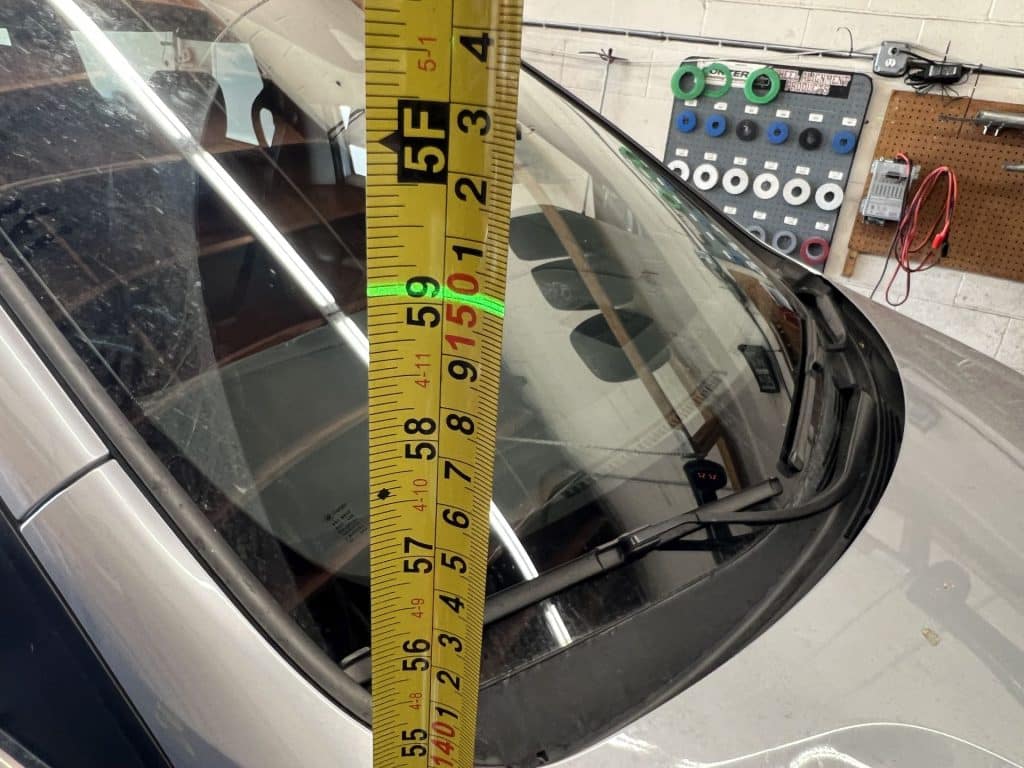
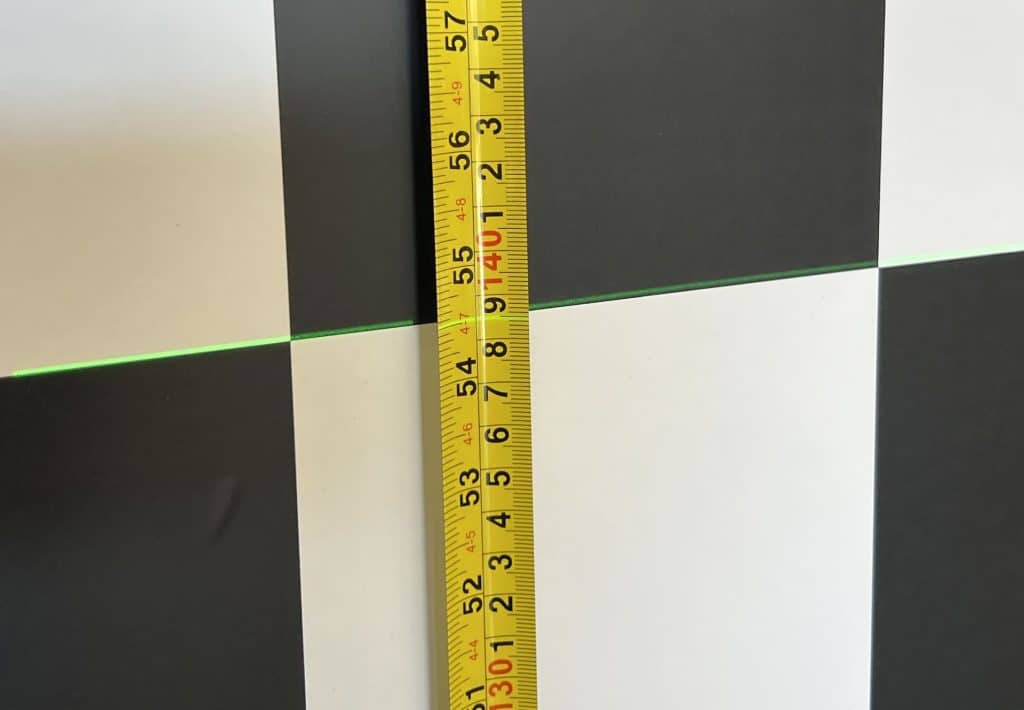
By the way, this floor passes the tennis ball test, but is sloped down to the bay door.
How do you set a target height perfectly in relation to the height of the alignment rack? It’s easy. You travel 2600 years into the future (from the Babylonian Empire) and replace your string with a laser level. Set the laser level on a tripod and put the tripod on the alignment rack. Use a tape measure to set the laser to the target height and then set your target height. Easy.
So, if you’re worried about your shop, ask how they plan to compensate for floor slope. They should have a plan. My method isn’t the only method, but they should have a plan.
How do aftermarket modification affect ADAS?
Most suspension modifications, aftermarket tires and wheels, and aftermarket bumpers will create problems with ADAS. Toyota has a procedure for “bricking” the radar sensor for vehicles with ADAS. Basically, they know the system won’t work correctly so they have a procedure to make sure it never works again. Kinda extreme but I suppose there’s some logic to it.
Some of you will say, “Yeah, but I don’t care about any of that sh*t. I can drive my own car. I’m gonna get some big ass tires and a massive bumper with a winch and turn all that ADAS sh*t off”. To which I say, “That’s cool man. ‘murica. Go for it.”
Stock cars only
However, we’re not going to get involved. Not because we think you shouldn’t be able to do what you want with your car, but because ‘murica is a very litigious country and while you may be an honorable person and never consider suing us, the guy you bumped into in the parking lot may name us in his lawsuit because we had something to do with the pedestrian collision avoidance system not working.
Honestly, if you love mods and customization, you might want to consider an older car. “He should have bought a new car with a pedestrian collision avoidance system.” seems like it would be less effective in court than “he turned a safety system off”.
What happens if ADAS is not calibrated or out of calibration?
Cameras, radar, and ultrasonic sensors are the systems senses. Systems like brake warning and automatic braking for collision avoidance rely on camera(s) and radar. Lane departure warning and lane keeping assist usually rely mostly on the camera. Automatic radar cruise control uses the radar sensor and camera.
So, what happens when it’s out of calibration? Imagine trying to walk down a busy sidewalk while looking through binoculars. You’d be stopping and weaving and ducking trying to dodge giant people that were seemingly coming right at you.
This is what happens when a system is out of calibration. It can’t see the lane marking or they don’t make sense given the direction of travel, so lane departure and cruise control don’t work or work erratically. You may get “BRAKE NOW!” warnings or your car may even unnecessarily apply the brake. Or the opposite could happen, and the car may let you rear end someone.
Your car may freak out when you hit your turn signal even though the lane next to you is clear, or not work let you change lanes right into another car.
Your cross-traffic warning may freak out when you’re backing up even though the coast is clear or the opposite. You get the idea. All the systems designed to help you will instead work against you and create an unsettling cacophony of lights and noises that make driving unpleasant.
Are aftermarket ADAS calibration systems OK?
I don’t have the answer. This isn’t really my field, so much like using only Subaru windshields, I’m going to follow the manufacturer laid out as closely as I can. When we ordered the Toyota trihedral corner reflector, and I was very disappointed. It has a flimsy wobbly stand and the mount and trihedral are also flimsy. Many people had told me the Autel reflector was better, so I bought one. But here’s the thing: it’s not the same size. And while the stand is much better, the box the target mounts to is thin junk.
So, does the size matter? Once again, I don’t really know, but it seems like it would. If studying bouncing radio beams is your thing, please drop me a line and let me know.
(Update 2023: I talked with an engineer with many years of experience working on self-driving cars among other things. The size of the trihedral doesn’t matter much as far as aiming goes, but there are some advantages to a smaller trihedral.)
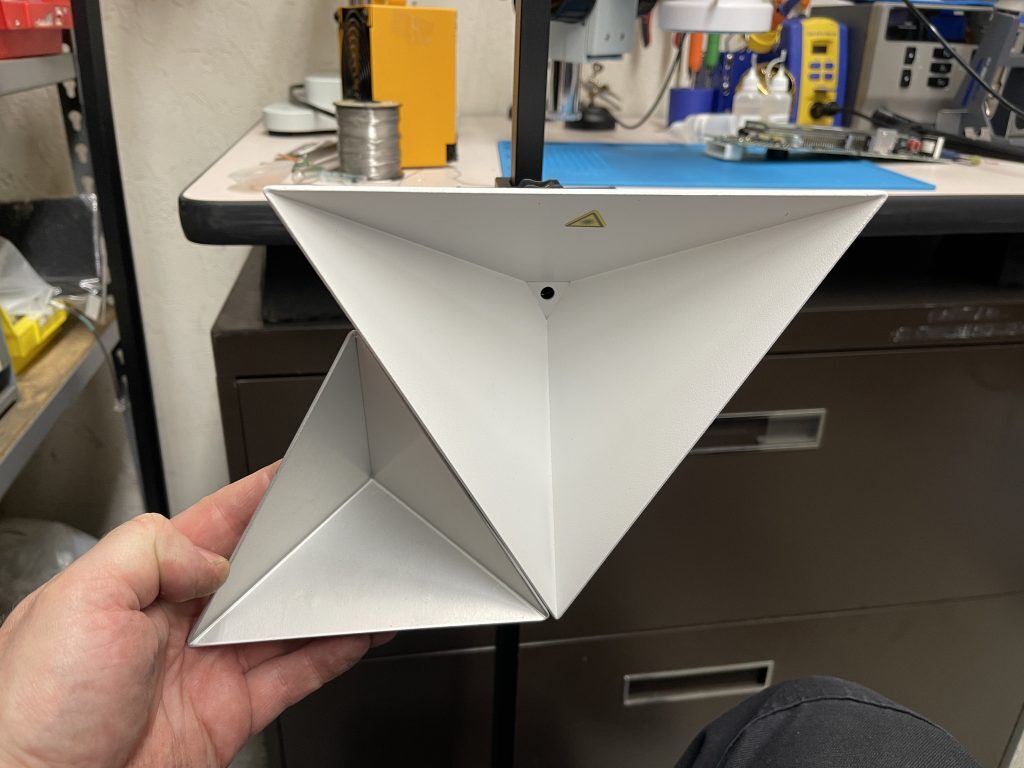
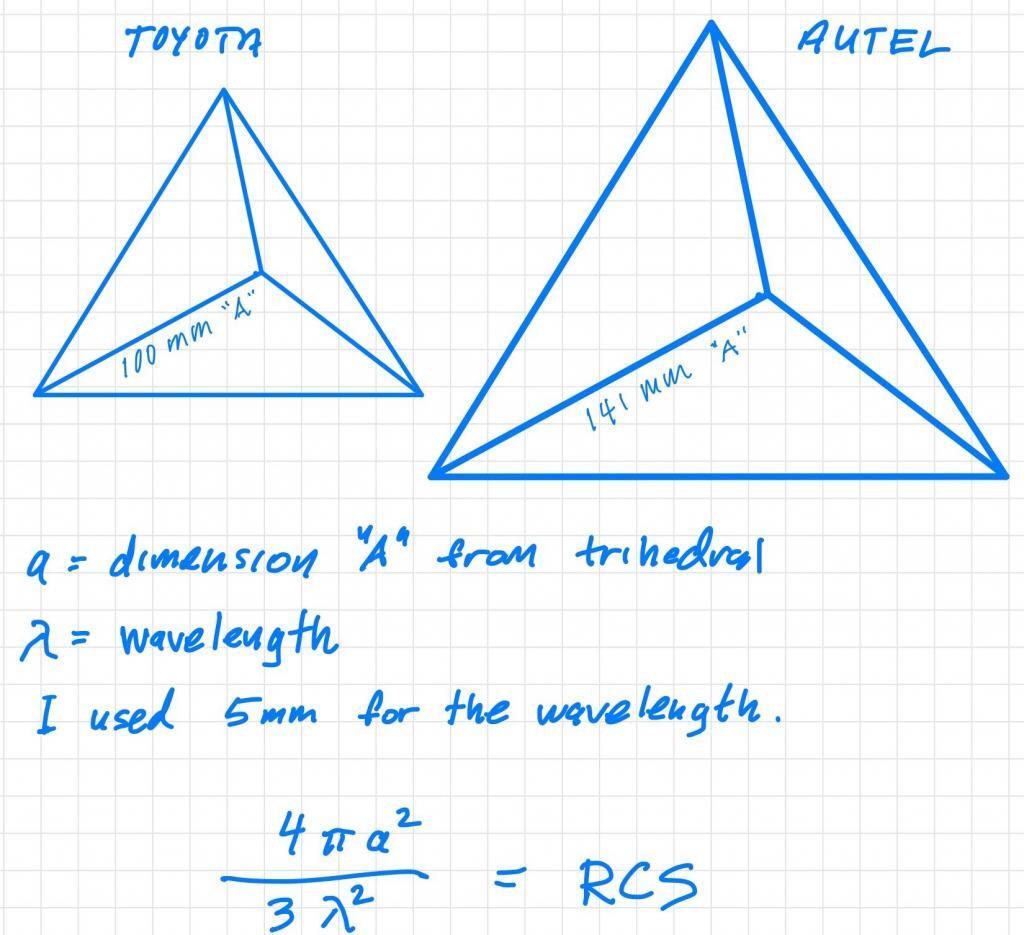
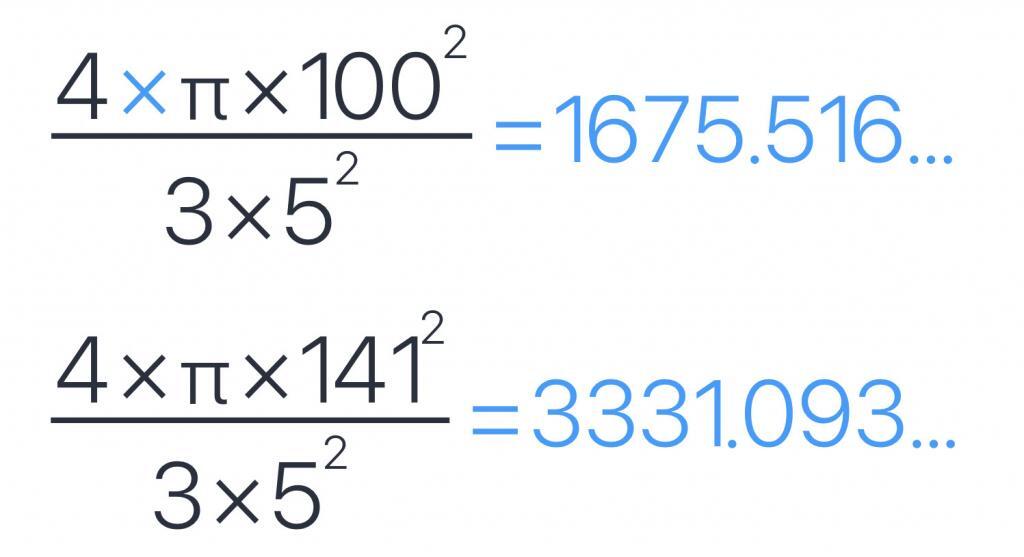
A fool copies some math from the internet
I’m no engineer, but I was curious, so I did a little research on the interwebs. I probably got a lot of things wrong. Here’s what I think I know. (And here’s where I got it)
Trihedral corner reflectors amplify the returning radar signals in a predictable way, so they are used for radar calibration. The amount it reflects back is known as its radar cross-section (RCS). The RCS for a trihedral can be calculated using the formula above on the right.
As near as I can tell, automotive radar wavelength is likely around 4-5mm. I measured the Toyota target and the Autel target and did my best to plug the numbers into a calculator (I’m also no mathematician). To me it looks like that the Autel is bigger in both physical size and RCS (by what seems like a lot). Does it matter? I don’t know, so I use the wobbly target we ordered from Toyota.
What makes does Art’s Automotive calibrate?
The short answer is Toyota, Subaru, and Honda. We also repair Mazda, but don’t do any ADAS calibration or programming.
We decided not to buy an aftermarket ADAS calibration system. On the one hand, it would be very convenient to have coverage for every vehicle. On the other hand, aftermarket ADAS systems aren’t the same as the factory tools, and we aren’t qualified to determine if that’s OK.
We’ve seen some scary settlements in tire repair cases. Following factory procedures using factory tools seems like the best way to ensure that we keep the ADAS systems operating as designed and avoid potential blame should the car later be involved in a collision.
This means that we’re buying targets one at a time. Unfortunately, they can take up to six months to arrive.
Toyota has printable targets, and we have the Toyota radar reflector, so we should be able to calibrate nearly all Toyota vehicles. For Subaru we have two Eyesight targets and should be able to do most Subaru EyeSight calibrations. For Honda we have the target for calibrating the passenger side mirror camera. We don’t plan on adding ADAS calibration for Mazda or Nissan at this time.
Should I let my glass shop do my ADAS calibration or should I go to a dealership?
This is an impossible question to answer. I’m sure there are glass shops that are good at ADAS calibration. I know for sure that there are some that are very bad at it.
Just because the tech doing the work works at a glass shop doesn’t mean anything. He or she might be well trained and care about the quality of his or her work.
Likewise, just because you take your car to a dealership for camera or radar calibration doesn’t mean you’re going to get quality work. Dealerships like to promote the idea that they’re the best at everything related to their product, but dealerships are just like any other shop. Some are good. Some are awful.
pros and cons: dealerships vs. glass shops
For the glass shop, it’s more likely you’ll pay less for the service. However, it’s also more likely they’ll be using aftermarket equipment (which may or may not be a bad thing). They may also only offer services related to the forward-facing camera, so if you need millimeter wave radar calibration, you’ll need to go somewhere else.
Let’s start with the dealer’s pros. They’ll probably use genuine parts (although not all do, so always ask). They’ll have the manufacturer approved targets and scan tool. Dealerships usually send their technicians to training courses, so getting a technician who has been trained on your system is way more likely. It’s also more likely to get a tech who has done the same job many times before, and experience is a good thing. Finally, if they get stuck or have a hard time, they have support resources through the manufacturer.
Now for the cons. The dealer will almost certainly be more expensive than a glass shop. Some dealers have awful cultures, and this can be a big deal. If a tech has been to a training on a system but doesn’t care about doing a good job, then the training isn’t really a plus. Each dealership is a different business. There are some very good ones out there, but the bad ones have left quite an impression on the motoring public.
Can a regular mechanic shop perform ADAS calibration?
So, what about independent shops? Well, I’m a little biased, but I think we’re the best option most of the time. Not all shops will do camera and radar calibrations, so you’ll need to do a little looking around.
As far as pros and cons, we’re all so different it’s very hard to generalize. What I do know is this; we care about doing a good job, especially with a safety system. If we can’t do it properly, we won’t do it. We may need to buy a target for your car since we don’t have them all. Sometimes that means we won’t be able to do the work quickly the first time we encounter a new system.
Should I look for a mobile ADAS calibration service?
Most mobile calibration services only work for repair shops and don’t do any work for the general public, but your shop may contract out the work for you and this isn’t necessarily a bad option.
I have met a lot of really great mobile technicians over the years. I’m not talking about the fools posting on Craigslist and doing illegal repairs on the side of the street, but the cream of the crop techs that come to bail out independent repair shops when they get in over their heads or don’t own the necessary equipment for a project.
A lot of these mobile guys have hundreds of thousands of dollars of equipment that goes obsolete every 5 years, so while they don’t have rent, they certainly have expenses.
Just like dealerships have a support line, independent shops usually have access to a local mobile mechanic who is very good with high tech work like network diagnostics, programming and calibration, EEPROM hacking, locksmithing and immobilizer services, and that sort of thing.
Recently many techs in this field have added mobile ADAS calibration to the list of their services. If you’re working with an independent shop that does alignment work, but not ADAS work, teaming up a mobile ADAS calibration service may be a good option.
How much does ADAS calibration cost?
Before answering this question let’s make sure we’re comparing apples to apples. Proper wheel alignment is mandatory for ADAS calibration. There’s no way to know if wheel alignment is correct without checking it, yet many shops do aiming without doing an alignment. So, if you compare our price to a shop that doesn’t include a wheel alignment, it’s not a fair comparison.
Ok, now that you know every calibration quote also includes a wheel alignment, I can answer the question. How much does ADAS calibration cost? It depends. I know. I’m awful. Let me try to redeem myself.
For most ADAS calibrations (including wheel alignment) we’re billing between 2.5 and 3 hours. Our current labor rate is $158 per hour. There are no parts required typically, so an ADAS calibration costs between $395 and $474, usually.
Just so you know, a wheel alignment is $158 by itself, so a calibration for $295 is actually more that our $395 if it doesn’t include a wheel alignment.
Our prices will change in the future, and this isn’t a quote. If you’d like a quote, call and we’ll give you a firm price for your particular car and calibration.
I should mention that there isn’t just “a” ADAS calibration. There are a myriad of systems and sensors and procedures are different for each one, but because we spend the bulk of our time measuring target locations, they’re similar in price even though procedures are different.
Finally, ADAS calibrations will likely be way cheaper in other parts of the country. Here in Berkeley, a crappy 800 sq/ft house is over $1,000,000. The cost of living is very high. If there’s a guy in Montana doing ADAS calibration for $100, well, maybe a road trip is worth it to you. I don’t know.
How long does an ADAS calibration take?
This is really two different questions. The first is how long will you need to leave the car and the second is how long does it take a mechanic to do the calibration.
I’ll start with how long it takes the mechanic. The fastest I’ve been able to complete any calibration is 2.5 hours (including wheel alignment). Absolutely everything went right. The longest I ever spent was 5 hours. I had to fabricate a target mount and there was a reflective object on the dashboard that prevented aiming. Over time I’m hoping to whittle this down to 2 to 2.5 hours. We’ll see.
Now for how long you’ll need to leave your car. We work by appointment, but you’ll need to plan to leave the car for at least the day. I say “at least” because sometimes traffic is too bad to complete the dynamic calibration. If the freeway is bumper to bumper by the time we’re done with the static calibration, we’ll need to keep the car until the next day and try the dynamic calibration again at 10AM.
If you need ADAS calibration and you’re in Berkeley, give us a call
So, if you’re looking for an ADAS calibration for your Toyota, Honda, or Subaru in Berkeley, Oakland, Emeryville, Albany, El Cerrito, or anywhere in the East Bay, give us a call. Typically, we’ll need to do a little research to determine if we’re set up for the calibration on your model before setting up an appointment. Currently we have most Toyota and Subaru models covered and about 50% of the Honda models covered.
No salvaged vehicles!
A salvaged or “totaled” vehicle is a car that has been wrecked so badly that it doesn’t make economic sense to fix it. The insurance company gives the owner the entire value of the vehicle and then sells what’s left of it, usually to a wrecking yard, but sometimes people buy salvaged vehicles and “fix” them and then sell them.
Why would someone fix a car that’s not worth fixing? Because they aren’t really going to fix it. They’re planning on selling a lemon to a sucker. I’m very sorry it this happened to you, but we won’t do any ADAS work on a salvaged vehicle.
Here’s why. People who “fix” and sell salvaged cars do sketchy things like this. This is picture of an ADAS camera mount. The camera height and angle are critical to proper operation of the system.
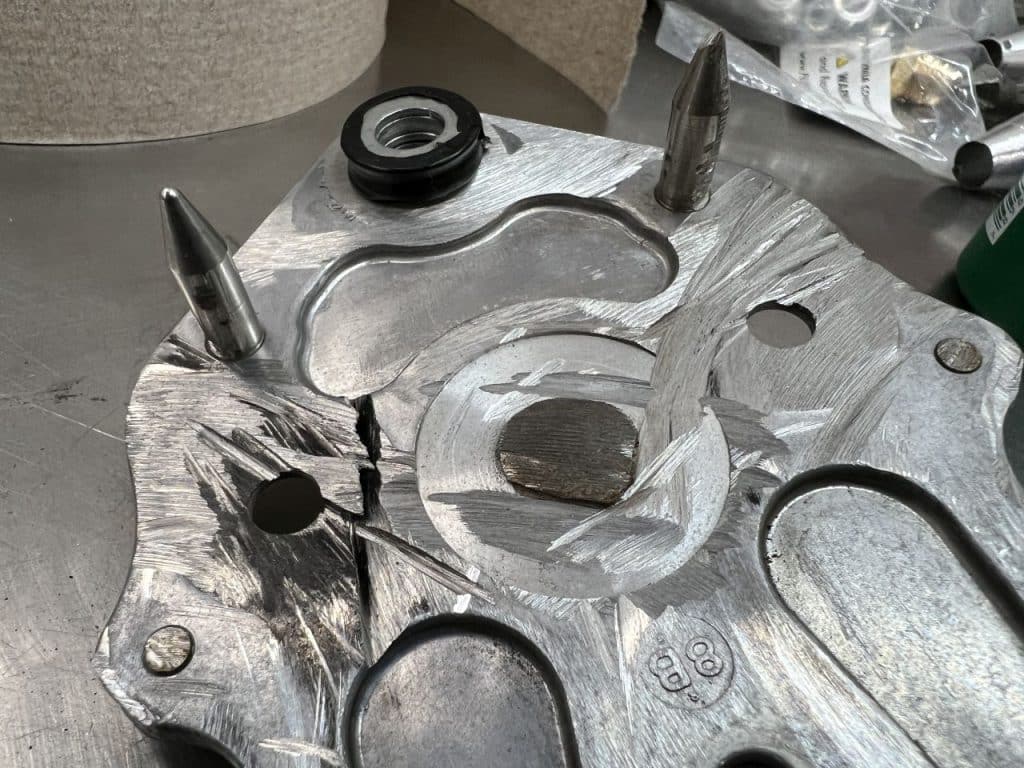
The roof of the car wasn’t welded on correctly, so instead of doing it properly, then hacked at bracket to try to get it to work. They couldn’t, so they just sold the car and said, “Oh, it just needs a calibration. Here’s a discount”.
When this car got here it took me hours to figure out why the calibration wouldn’t run, and once I did, there was nothing I could do to fix it. We don’t do body work, but even if we did, I suspect that a proper repair would exceed the value of the car, which is why it was salvaged.
Anyway, our policy is no salvaged vehicles for this reason. A history of a properly repaired collision is fine. A salvaged title is not.
If you’d like to read more about Subaru Eyesight Calibration, here’s another article.
If you’re interested in the causes of Honda Multipurpose Camera failure, we have an article with a U3000-49 case study
I-Car
We all owe I-CAR a debt of gratitude. And by “we” I mean not only mechanics, body shops, and glass shops, but also manufacturers, dealerships, and the motoring public. Why?
I-CAR did a lot of the heavy lifting when it came to compiling and organizing information related to ADAS systems and ADAS calibration. I-CAR offers education and certification related to body repair, and body shops were the first group to need a crash course (ooh! a pun) on ADAS.
I know nothing about body repair, but I have used their resources and been to a couple of I-CAR ADAS classes. They have done a very good job filling in the gaps left by manufacturers and disseminating information about ADAS.
If you’re interested, check out the I-CAR website for more ADAS info.
